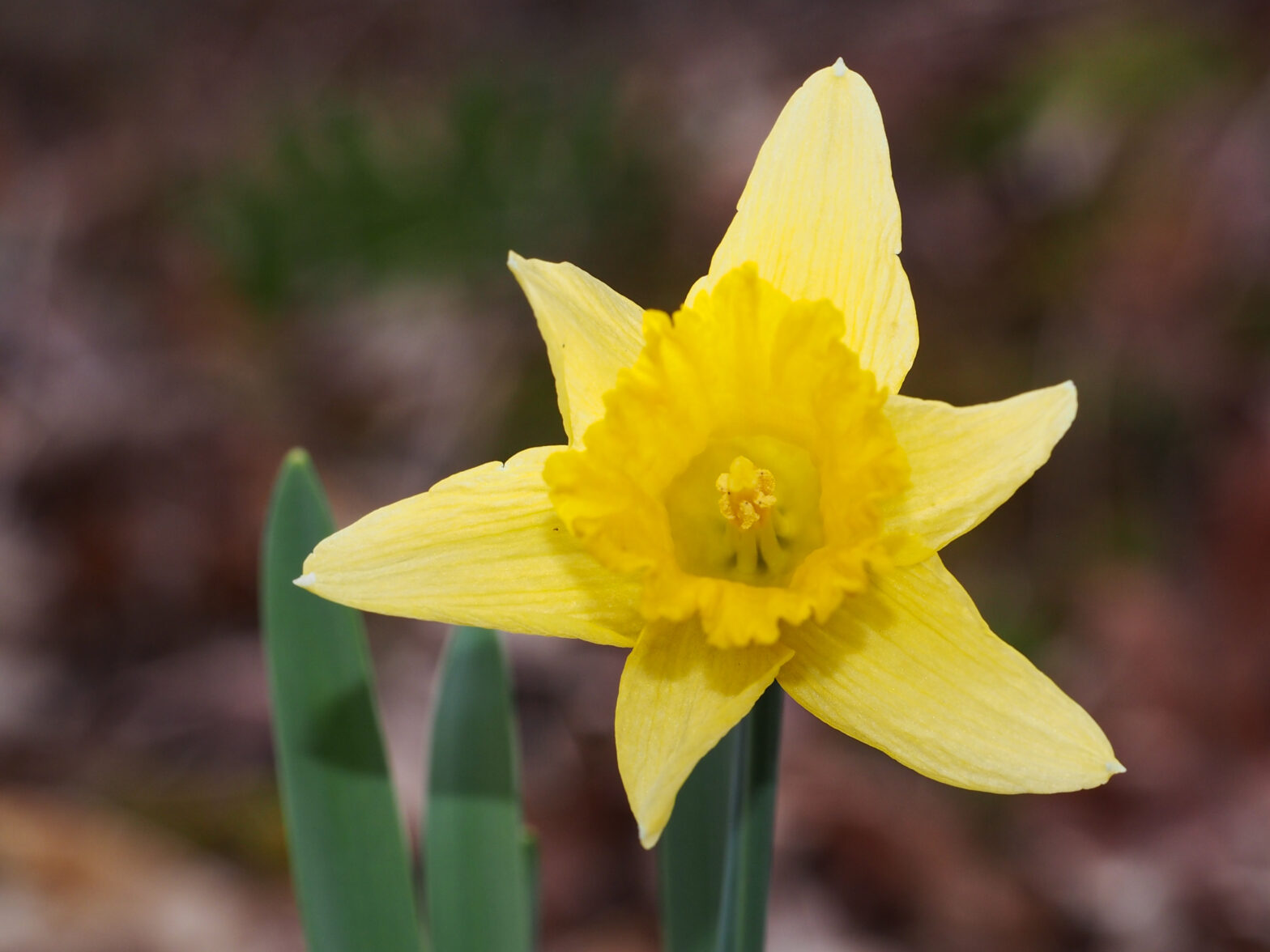Though I have planted a variety of daffodils since moving here, the first to flower are always the ones that came with the house. They are the classic showy bright yellow blooms, and either the previous owners were wildly ambitious, or they have seeded themselves into many new clumps. The first blossoms opened this week, with many hundreds more to come.
Daffodils are native to Europe and North Africa, but they have become ubiquitous staples of American gardens. Their taxonomy seems prone to controversy, with somewhere between 40 and 200 species based on whether the scientist you ask tends to lump or split species. Even more impressive, over 32,000 cultivars have been registered. All this vast array of hybrids indicates the immense enthusiasm over creating many daffodil varieties.
Years ago, as I explored the woods in North Carolina near my first home, I would come across bright yellow patches of flowers in the regenerating forest. Closer inspection would always reveal half hidden remnants of old houses, with a stone chimney or foundation lingering as the only sign of what was once a home. They are cheerful ghosts, haunting these forgotten buildings.
I always anticipate the sunny cheer of their bright yellow petals as I watch the shoots begin to emerge in winter. They are one of the most emphatic signals of approaching spring in my garden. There may still be an occasional snow, but generally by the time the daffodils flower, winter is on its way out. I think of each flower as a tiny sun, yellow petals stretching out like rays, miniature versions of the warming winter sun on earth.
